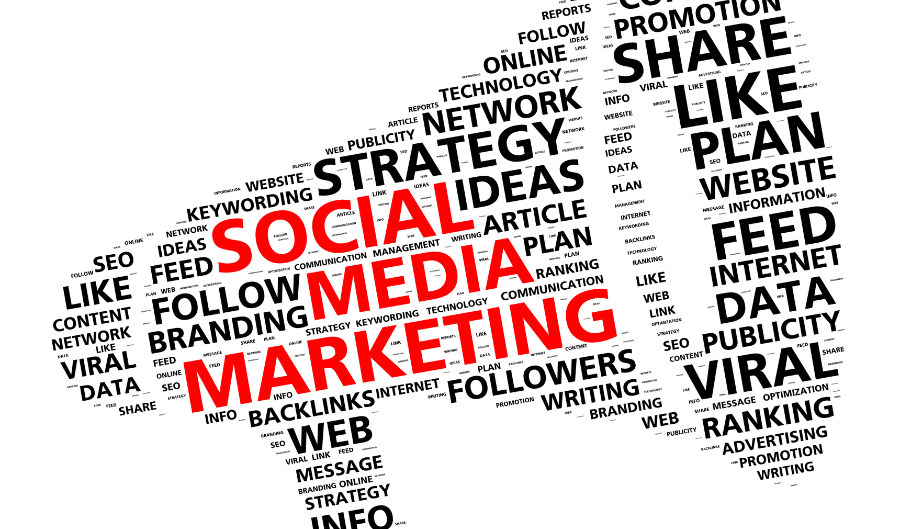What is social media in digital marketing? Everything you need to know
Social media in digital marketing uses online platforms to create, share, and exchange content to build relationships and engage with potential and current customers. It’s one of the most critical aspects of digital marketing. You can use it in various ways to achieve different goals. This article will explain social media in digital marketing, why it’s essential, and how you may benefit from it.
What Is Social Media Marketing (SMM)?
Social media marketing, or SMM, is a type of digital marketing that uses social media platforms to promote a product or service. You can use social media to connect with customers and create an online community around your brand. The goal of social media marketing is usually to build awareness of a brand or generate sales leads. To do this, you can post content on social media, run ads, or hold contests and giveaways. You can also use social media to connect with influencers and promote your products or services on popular platforms. Using social media in your marketing efforts can reach a broad audience and connect with potential customers worldwide.
Role of social media in online marketing

The role of social media in digital marketing is to create exciting and engaging content and then share that content with as many people as possible. The more people who see and interact with your content, the more likely they will take action, such as clicking on a link, visiting your website, or making a purchase.
Digital marketing without social media would be much less effective, as it would be much harder to reach a large audience. Social media provides a way to quickly and easily share your content with a wide range of people, which can help to increase its reach and impact.
Digital marketing without social media would be much less effective, as it would be much harder to reach a large audience. Social media provides a way to quickly and easily share your content with a wide range of people, which can help to increase its reach and impact.
There are several different social media platforms that you can use to promote your content, and each one has its strengths and weaknesses. Choosing the right platform for your audience and goals is essential. For example, a platform like Facebook or Twitter is a good choice if you want to reach many people with your message. Suppose you want to engage in a more personal and intimate conversation with your audience. In that case, a platform like Snapchat or Instagram might be better.
No matter which social media platform you use, the important thing is to create exciting and engaging content that will resonate with your audience. With social media, you have the opportunity to reach a large number of people and make a real impact with your marketing campaigns.
Why Social Media is best for marketing?

Social media marketing is powerful for several reasons:
- It allows you to target a specific audience with laser precision. For example, Facebook allows businesses to target users based on interests, demographics, and location. Companies can create highly relevant ads for their target consumers, increasing the likelihood that those consumers will take action.
- It’s cost-effective and provides an immediate return on investment. Unlike traditional forms of marketing, which can be expensive and time-consuming, can do social media marketing quickly and cheaply.
- It is effective because it allows you to build customer relationships.
By engaging with customers on social media, you can create a sense of brand loyalty and customer trust. As a result, it is an essential tool for any business looking to succeed in the digital age.
What is a social media marketing strategy?

A social media marketing strategy is a plan of action for using social media to achieve specific business goals. The first step in creating a social media strategy is identifying your goals. What do you want to accomplish with your social media presence? Once you have a clear idea of your goals, you can develop an action plan. This plan should consider the time and resources you have available and the unique features of each social platform. For example, suppose your goal is to increase brand awareness. In that case, you might create a series of Twitter posts featuring your company logo or interesting post articles on LinkedIn. Once you have made your plan, sticking to it and being consistent with your content and messaging is essential. With a well-executed strategy, you can achieve remarkable success for your business.
How to create a Social Media Marketing Strategy
Any business that wants to succeed in the modern marketplace must have a social media presence. But simply being on social media is not enough. It would help if you also had a well-thought-out social media strategy. Building a system can seem daunting, but it doesn’t have to be. Here are four simple steps you can follow to get started:
1. Define your goals
What are you hoping to accomplish with social media marketing? Greater brand recognition? More traffic to the website? Higher sales? Once you are clear on your goals, you can begin to create a strategy to achieve them.
2. Identify your target audience.
Who are you trying to reach with your social media marketing? Knowing your target audience will help you decide which platforms to use and what kind of content to share.
3. Create killer content.
Content is king on social media. Give people something worthwhile to contend with if you want them to engage with your brand. Share blog posts, infographics, images, videos, and more – anything that will capture attention and add value for your target audience.
4. Increased Brand Awareness.
One of the main goals of social media marketing is to increase brand awareness. Brand awareness is “the extent to which consumers can recall or recognize a brand.” In other words, social media can help make your business more visible online and get in front of potential customers.
5. Higher Conversion Rates.
Another goal of social media is to increase conversion rates or the percentage of people who take the desired action after seeing your ad. For example, if you’re selling a product, you want people to click on your ad and then make a purchase.
Social media can help increase conversion rates by building trust and credibility with potential customers. When people see that your business is active on social media and you’re regularly sharing high-quality content, they’ll be more likely to buy from you when they need what you’re selling.
6. Promote, promote, promote!
Once you have great content, make sure people see it. Please share it on your social media platforms and in relevant online communities. Use paid advertising to give your content a boost.
Which Social Media Platform Is Best for Marketing?

There are a variety of social media platforms available, each with its strengths and weaknesses. When deciding which platform to use for marketing purposes, one must consider the target audience and the kind of message. For example, Twitter is an excellent platform for sharing short updates or announcements. Still, it may not be the best choice for a more in-depth marketing campaign. In contrast, Facebook is ideal for building relationships with potential customers and providing them with helpful content. Ultimately, there is no definitive answer regarding choosing the best social media platform for marketing. The best option is to experiment with different platforms and see which produces the best results.
Creating your social media marketing (SMM) plan
Creating an SMM plan might seem daunting, but it doesn’t have to be. The first step is to decide which social media platforms you want to use. It will depend on your business goals and the demographics of your target audience. Once you’ve selected your platforms, you need to create engaging content that will capture the attention of your target audience. The key is to keep it interesting while highlighting your business’s unique selling points. Finally, you must establish a regular posting schedule and stick to it. Consistency is vital when it comes to social media marketing. Following these simple steps, you can develop a plan to help you achieve your business goals.
Social media marketing tips For beginners
Any business owner worth their salt knows that social media is a powerful tool that can use to reach new customers and grow their brand. However, knowing where to start cannot be accessible with many platforms and available options. Here are a few tips to help you get the most out of your social media campaigns:
First, it’s essential to choose the right platform for your business. If you’re selling visual products or services, then platforms like Instagram and Pinterest may be a good fit. If you’re more focused on delivering news and information, then Twitter or LinkedIn may be more appropriate. The key is to select the platform that best aligns with your goals and target audience.
Once you’ve identified the right platform, it’s time to start creating content. Again, this should be tailored to the specific platform you’re using. For example, images and videos tend to perform well on Instagram. At the same time, longer articles or blog posts are more suited for LinkedIn. The key is creating interesting, engaging content to help you connect with your target audience.
Finally, don’t forget to promote your content once it’s published. Can do this through paid advertising, but several free options, such as social media sharing buttons. The key is to get your content in front of as many people as possible.
Following these simple tips can make social media work for your business. With a little effort and some trial and error, you’ll be able to find the platform and content that best suits your needs. So why are you still waiting? Get started today and see how social media can help you reach your business goals.
Core Pillars of SMM
It’s undoubtedly one of the most efficient and cost-efficient methods for reaching target audiences and promoting goods or services.
However, to be successful, businesses must understand the core pillars of social media marketing.
The first pillar is content. Content is the foundation of any social media campaign and should be high quality, informative, and engaging. Without solid content, businesses will have difficulty attracting potential customers and followers.
The second pillar is community building. Companies must interact with their target audience and create a sense of community. Can be done by responding to comments, hosting online discussions, and offering exclusive deals or promotions.
Finally, businesses must measure their results to fine-tune their social media strategy. By tracking key metrics such as reach, engagement, and conversions, companies can adjust their content and activities to achieve their desired results. By understanding and utilizing these core pillars, businesses can maximize their marketing efforts and succeed.
Advantages and Disadvantages of SMM
SMM uses online platforms like Facebook, Twitter, and LinkedIn to build relationships and interact with potential and current customers. While SMM can be an extremely effective way to reach out to new and existing customers, there are some advantages and disadvantages that businesses should be aware of before they dive in headfirst.
One advantage of SMM is that it’s relatively inexpensive. Compared to other marketing channels such as television or print ads. Additionally, social media platforms offer businesses a way to target specific demographics with laser precision. However, one disadvantage of SMM is that it can be time-consuming to create and post content regularly. Additionally, keeping up with the latest platform changes and updates is essential to ensure that as many people see your content as possible. Overall, SMM can be a great way to reach out to potential and current customers. Still, it’s essential to consider both the advantages and disadvantages before you get started.
Conclusion
A Quick Overview, Social media has become an essential part of digital marketing. It allows businesses to communicate with customers and create relationships. Social media platforms also enable two-way communication, which benefits the company and the customer.
To use social media effectively in your digital marketing strategy, you must understand how it works and its benefits. Social media platforms are a great way to connect with customers on a personal level. Customers appreciate it when businesses take the time to respond to their questions and comments. Shows that you care about them and their experience with your company. Social media can help improve SEO results by increasing website traffic and creating links to your website.
Additionally, social media in digital marketing can help build brand awareness and trust among customers. If used correctly, social media can be a powerful tool in your digital marketing arsenal. However, it’s essential to consider the advantages and disadvantages before you get started.





